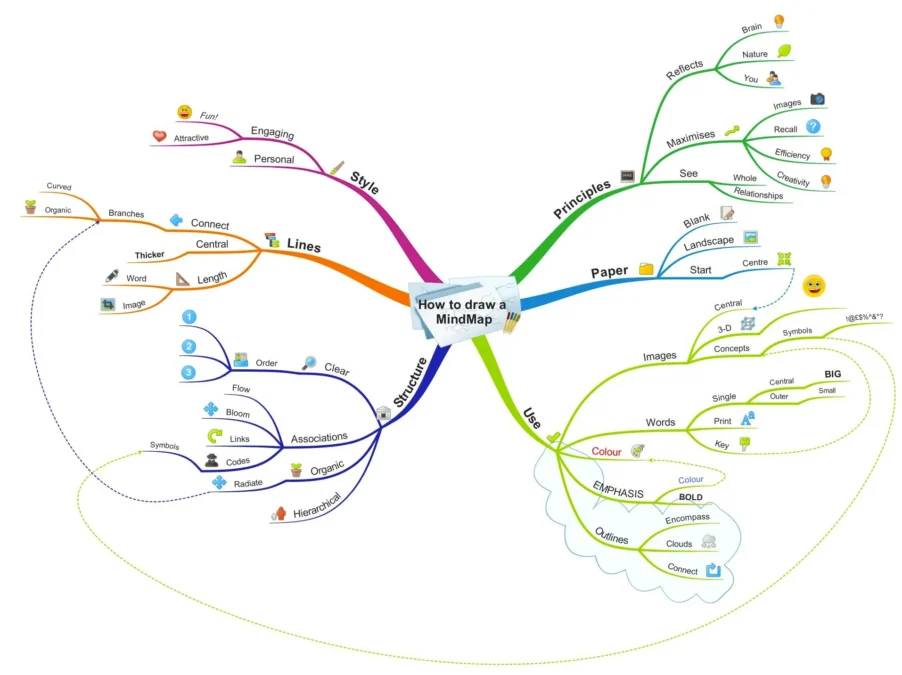Pulse of Information
Stay updated with the latest news and insights.
Mind Mapping Tool Showdown: Which One Sparks Your Creativity?
Unleash your creativity! Discover the ultimate mind mapping tools in our showdown and find the perfect one for your ideas.
Top 5 Mind Mapping Tools: Features, Pros, and Cons
Mind mapping is an effective technique that helps organize thoughts and visualize ideas, and choosing the right tool can enhance this process significantly. In this article, we will explore the top 5 mind mapping tools, highlighting their key features, advantages, and drawbacks. Each tool has its own strengths, from user-friendly interfaces to advanced collaboration options, making it essential to pick one that aligns with your specific needs.
1. XMind: Known for its versatile features, XMind supports various diagram styles and has robust export options. Pros: Intuitive layout and rich templates; Cons: Limited free version access.
2. MindMeister: This online tool excels in collaborative mind mapping. Pros: Real-time collaboration; Cons: Requires an internet connection.
3. SimpleMind: A great choice for beginners due to its ease of use. Pros: Clean interface; Cons: Lacks advanced features.
4. Coggle: Offers a unique branching style ideal for creatives. Pros: Unlimited image uploads; Cons: Exporting can be limited in the free version.
5. Lucidchart: While primarily a diagramming tool, it has excellent mind mapping capabilities. Pros: High integration with other apps; Cons: Can be complex for non-tech users.

How to Choose the Right Mind Mapping Tool for Your Creative Process
Choosing the right mind mapping tool can significantly enhance your creative process by streamlining your thoughts and organizing your ideas. Start by identifying the specific features you need. Consider whether you require a tool that supports collaboration, as many creative projects benefit from team input. Additionally, look for options that allow easy integration with other software you use, such as project management or note-taking applications. You may also want to think about the user interface; a clean, intuitive design can make a world of difference in how effectively you can brainstorm.
Once you have a shortlist of potential mind mapping tools, take advantage of free trials. This allows you to explore each tool's functionalities and see which one resonates best with your style of thinking. Pay attention to how each tool handles visualization and whether it provides flexibility in formatting your maps. Finally, don't underestimate the community around a tool—strong support forums and resource availability can greatly enhance your experience and learning curve.
Mind Mapping vs. Traditional Note-Taking: Which Boosts Creativity More?
Mind mapping is a visually engaging technique that allows individuals to organize thoughts and ideas in a more dynamic way. Unlike traditional note-taking, which often relies on linear lists and paragraphs, mind mapping employs a radial structure that can stimulate creative thinking. This method encourages the use of colors, images, and connections between concepts, which can lead to a deeper understanding of the material and spark innovative ideas. Many creatives and professionals have found that mind mapping enhances their brainstorming sessions, as it provides a larger canvas to explore and express thoughts without the constraints of conventional formats.
On the other hand, traditional note-taking has been a steadfast approach for generations, primarily focusing on organized information capture through bullet points, outlines, and summaries. While this method has its merits in promoting clarity and straightforward retrieval of information, it may not provide the same level of inspiration or freedom as mind mapping. Studies suggest that the rigidity of linear notes might stifle creativity, making it harder for individuals to develop unique perspectives or connect disparate ideas. Ultimately, the choice between mind mapping and traditional note-taking may depend on the individual’s learning style and the specific goals of the task at hand.